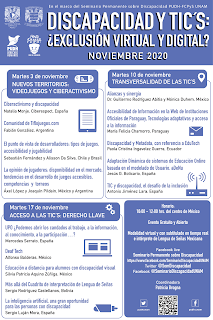16 Things to Improve Your Website Accessibility está escrito por Bruce Lawson, un gurú de la accesibilidad web.
Las 16 cosas que propone son:
1) Too Much Content
In brief: break up text into sections with headings and bulleted lists. Use simple language.
2) ReCAPTCHA
In brief: don’t make your users jump through potentially impossible hoops in order to save developer time.
3) Poor Legibility
In brief: make sure text has adequate contrast, is readable and isn’t justified.
4) Distracting Images and Graphics
In brief: allow users to stop any movement; respect their operating system settings; don’t auto-play video.
5) Poor Link Information
In brief: make links identifiable, with unique link text. Warn users if a link will open a new tab or a file.
6) Another Design Error: Removing the Focus Ring
In brief: make sure a keyboard user can always see where they are currently focused.
7) Form Filling
In brief: design form fields that look like form fields, each associated with a label. Don’t disable auto-fill.
8) Provide Text Alternatives for All Images, Video, and Audio
In brief: any information communicated through an image or video must have a textual equivalent.
9) Add Proper Document Language
In brief: let assistive technology know the language that your text is in.
10) Help a Visitor Get Around Your Content
In brief: use HTML landmark elements to help assistive technology users understand and navigate your content.
11) Use HTML Properly
In brief: understand the semantics and default behaviors of HTML elements; use the right element for your content.
12) Complex Interactions
In brief: Use ARIA only when a native semantic doesn’t exist; use the design patterns and code suggested by W3C.
13) Frameworks
In brief: frameworks aren’t inherently inaccessible if you choose your components wisely.
14) Content Management Systems and Site Builders
In brief: choose CMS and Site Builder themes carefully.
15) PDF
In brief: PDFs can be made accessible. Make sure your PDFs are so.
16) Keep Testing
In brief: test! With real people, if you can.
